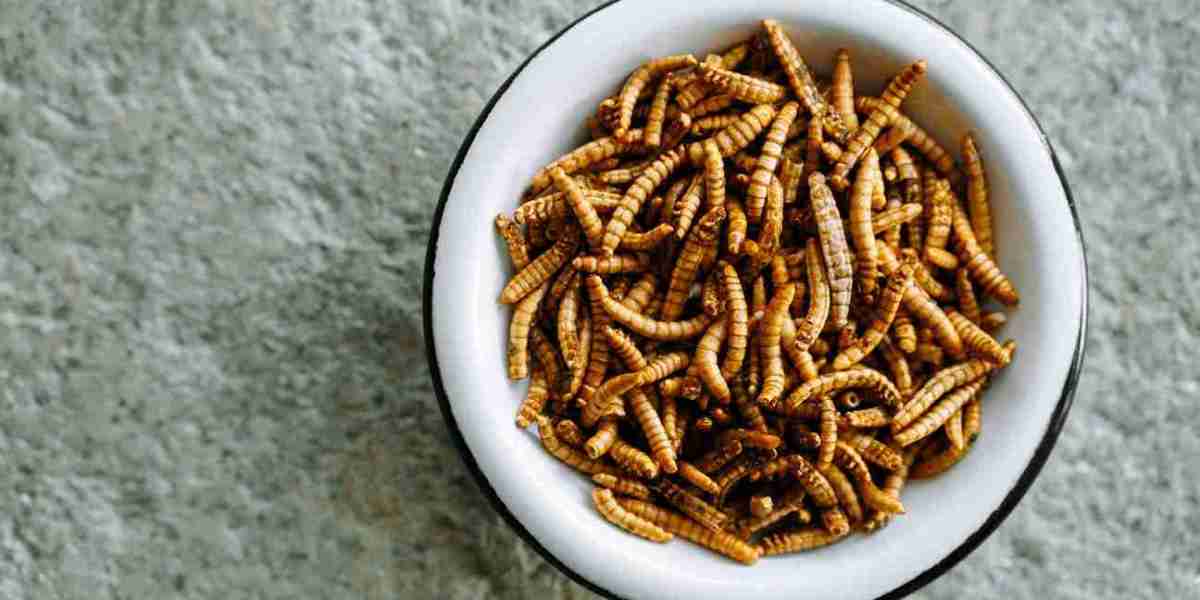Earthworm Meal Market: Developments and Trends
In recent years, the global search for sustainable, nutrient-rich protein sources has led to a surge of interest in alternative animal feeds and fertilizers. Among the emerging options, earthworm meal—a highly nutritious product derived from dried and ground earthworms—has gained significant attention. Once a niche product used primarily in small-scale organic farming or aquaculture, earthworm meal is now carving out a spot in the broader agricultural, feed, and even pharmaceutical markets. This article explores the developments in the earthworm meal market, including recent innovations, applications, and future outlook.
What is Earthworm Meal?
Earthworm meal is made by harvesting earthworms, typically Eisenia fetida (red wigglers), drying them, and grinding them into a fine powder. The result is a product rich in high-quality protein (up to 60–70%), essential amino acids, enzymes, vitamins, and minerals such as calcium, magnesium, and iron. Due to its excellent nutritional profile, earthworm meal has become an increasingly attractive ingredient for use in animal feed, aquaculture, poultry, pet food, and organic fertilizers.
Key Market Developments
1. Rising Demand in Aquaculture and Livestock Feed
One of the most significant developments in the earthworm meal market is the rising demand from the aquaculture and livestock sectors. As traditional fishmeal prices rise and environmental concerns about overfishing grow, aquaculture producers are exploring more sustainable and cost-effective protein alternatives. Earthworm meal, with its high digestibility and nutritional value, has been tested as a replacement or supplement to fishmeal with promising results.
Similarly, in poultry and pig farming, earthworm meal has shown to enhance animal growth performance, immunity, and feed conversion ratios. Several studies have confirmed that replacing a portion of conventional feed with earthworm meal can lead to higher productivity with fewer health issues.
2. Organic Fertilizer and Soil Health Applications
Beyond animal nutrition, earthworm meal is making waves in the organic farming and horticulture markets. The meal can be used directly as a slow-release organic fertilizer, or as a base for producing compost teas and microbial soil amendments. It provides not just nutrients but also beneficial enzymes and microbes that stimulate root growth and improve soil structure.
As the global organic farming market expands, especially in North America and Europe, the demand for natural, bioavailable fertilizers is pushing earthworm meal into the spotlight.
3. Innovation in Earthworm Farming and Processing
Technological advancements in vermiculture (earthworm farming) and processing methods are driving down production costs and improving scalability. Automated worm harvesting systems, temperature-controlled breeding environments, and solar-powered drying facilities are being integrated by startups and eco-farming cooperatives.
These innovations make earthworm farming more viable for commercial production, especially in regions like Southeast Asia, Latin America, and parts of Africa, where climate and labor availability are favorable.
4. Entry into Pet Food and Nutraceutical Markets
Another noteworthy trend is the entry of earthworm meal into premium pet foods and functional supplements. Pet owners are increasingly looking for natural, hypoallergenic protein sources. Earthworm meal, being non-GMO, antibiotic-free, and packed with bioavailable nutrients, is now used in some specialized dog and cat food products.
In the nutraceutical world, research is being conducted into bioactive compounds found in earthworms, such as lumbrokinase, an enzyme with potential anti-inflammatory and cardiovascular benefits. Although still in early stages, this development could open new high-value market segments for earthworm-based products.
Challenges Facing the Market
Despite its benefits, the earthworm meal market faces several challenges:
Regulatory uncertainty: In many countries, regulations surrounding insect and alternative animal protein use in feed are still evolving. Earthworm meal producers must navigate a patchwork of legal frameworks that can limit export or mass production.
Consumer perception: Earthworm-based products may face a "yuck factor," particularly in Western markets. Overcoming negative perceptions will require marketing, education, and normalization efforts, similar to those seen in the edible insect industry.
Scale limitations: While scalable vermiculture systems are emerging, the overall supply chain for earthworm meal is not yet mature. Reliable mass production, storage, and transport infrastructure must develop to meet growing demand.
Future Outlook
The future of the earthworm meal market looks promising. As sustainability becomes a driving force in agriculture and food systems, the appeal of earthworm meal as a circular, eco-friendly solution continues to grow. The market is expected to expand at a compound annual growth rate (CAGR) in the high single digits over the next 5–10 years, particularly in regions pushing for regenerative agriculture and sustainable aquaculture.
Startups, researchers, and policymakers alike are exploring the untapped potential of earthworms—not just as recyclers of organic waste but as key players in the bioeconomy. As awareness spreads and production becomes more efficient, earthworm meal could soon transition from a niche product to a mainstream input across multiple industries.



